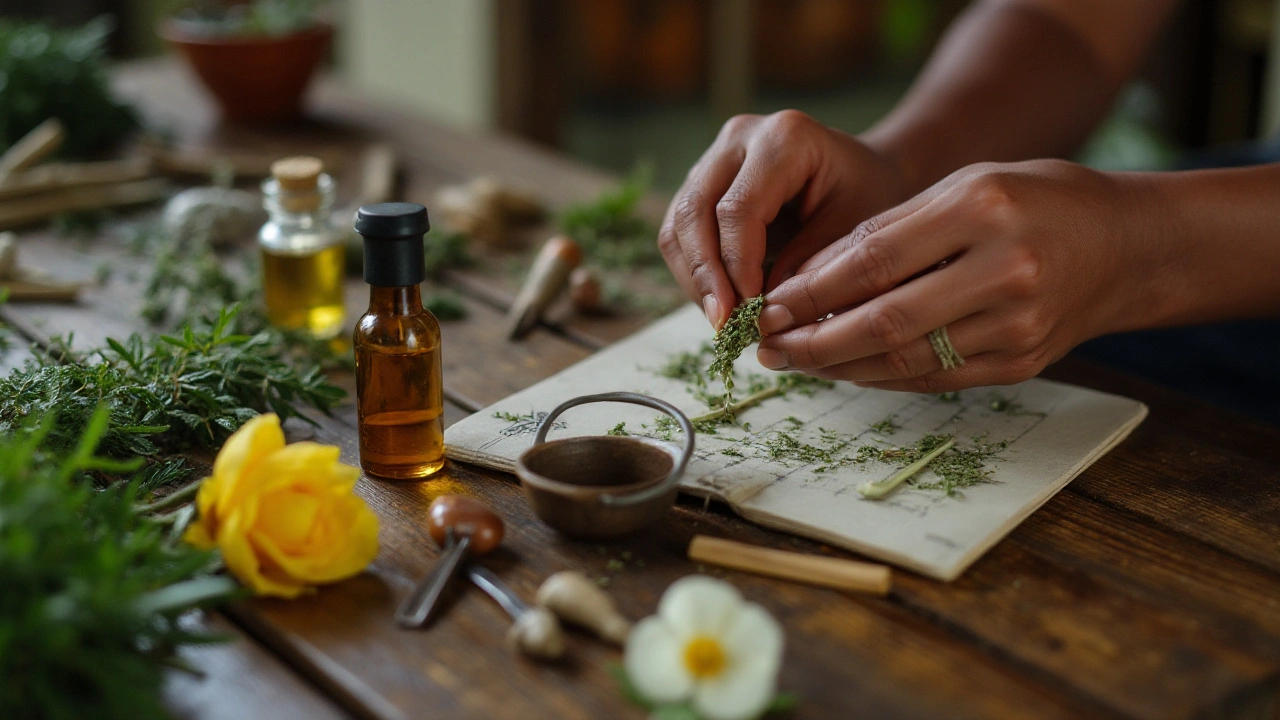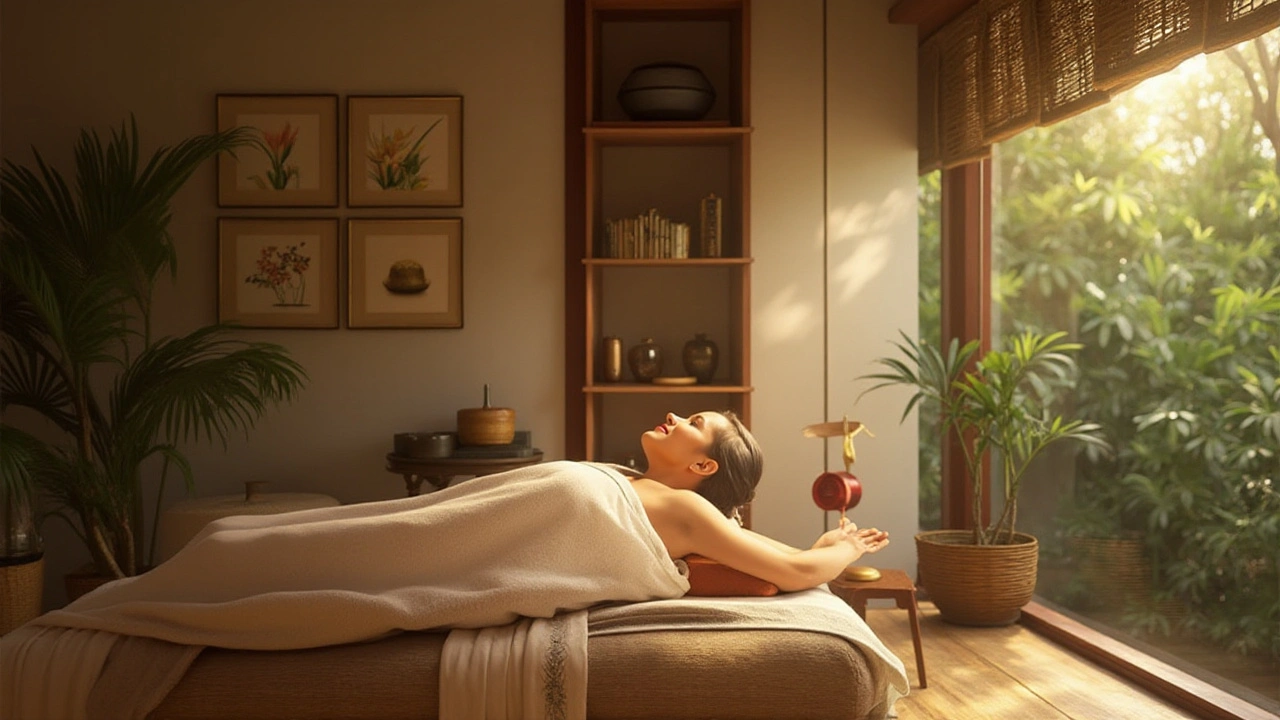Discover the Healing Wonders of Hilot: An Ancient Filipino Massage Tradition
 Oct, 1 2024
Oct, 1 2024
Hilot is an ancient healing method rooted in Filipino culture, known for its holistic approach to wellness. This traditional practice involves a blend of massage techniques and the use of natural ingredients such as herbs and coconut oil. Passed down through generations, Hilot not only addresses physical ailments but also aims to restore balance within the body, mind, and spirit.
In the Philippines, Hilot practitioners, often referred to as manghihilot, are highly respected for their knowledge and skill. They use a combination of intuition, hands-on techniques, and herbal remedies collected from their environment. The magic of Hilot lies in its personalized touch, making each session unique to the individual's needs.
Today, Hilot is gaining recognition beyond its homeland, being integrated into wellness routines worldwide. As more people seek natural and organic therapies, Hilot provides a timeless solution that harmonizes traditional wisdom with contemporary health practices. Whether you're looking to alleviate stress, relieve muscle tension, or enhance your overall well-being, Hilot offers a nurturing and effective path towards physical and emotional balance.
- Historical Origins of Hilot
- Techniques and Tools Used in Hilot
- Health Benefits of Hilot
- Modern Applications of Hilot
- Incorporating Hilot into Daily Life
Historical Origins of Hilot
Hilot is one of the ancient healing traditions rooted deeply in the cultural heritage of the Philippines. This practice dates back centuries, even before the Spanish colonization. It was passed down from generation to generation, with the knowledge being carefully curated by elders, healers, and shamans within the community. The term 'Hilot' itself comes from the Filipino word for massage, which highlights the essential technique used in the treatment process.
The origins of Hilot are intertwined with the Philippines' indigenous spiritual beliefs and practices. Ancient Filipinos believed that good health was maintained by a balance of the mind, body, and spirit. Illnesses were often seen as a disruption of this balance. The manghihilot—the practitioners of Hilot—were looked up to as both healers and spiritual guides who could restore this balance through their skilled touch and understanding of the natural world.
Historical records and oral traditions often describe the manghihilot as essential figures in their communities. They were known to have an innate ability to 'scan' and 'sense' ailments within the body. This skill was sometimes believed to be a gift, a special talent honed through years of practice and close mentorship. Their training involved not just learning the intricate techniques of massage but also understanding the healing properties of plants and herbs native to their regions.
An interesting aspect of Hilot’s historical practice was its integration with other traditional ceremonies and rituals. It was common for manghihilot to be involved in significant life events, such as childbirth, where they played a vital role in ensuring the health and wellbeing of both mother and child. Their expertise was also sought during other pivotal moments when the community faced diseases or natural calamities, where they offered both physical healing and spiritual reassurance.
Cultural anthropologist Professor Juan de Castro once remarked, "The practice of Hilot is not merely a form of physical therapy but a profound testament to the holistic approach to healthcare embraced by early Filipinos."Today's practitioners still honor these historical roots, adapting ancient techniques to fit modern needs while preserving the essence of Hilot.
When exploring the history of Hilot, it becomes apparent how cultural and environmental factors shaped its development. The Philippines, with its rich biodiversity, provided a plentiful source of medicinal plants and herbs. This abundance allowed manghihilot to experiment and develop remedies that complemented their massage techniques. Coconut oil, banana leaves, and various herbal concoctions often became part of the healing process, making Hilot a truly organic form of therapy.
Even as modernization and Western medical practices found their way into the Philippines, Hilot managed to maintain a significant place in healthcare. The resilience of this practice speaks volumes about its effectiveness and the deep respect it commands within Filipino culture. Today, Hilot is not just seen as an alternative medical treatment but is embraced as a complementary practice, often integrated into mainstream wellness routines both in the Philippines and worldwide.
Techniques and Tools Used in Hilot
Hilot, with its deep roots in Filipino traditions, revolves around a set of unique techniques and tools that make it stand out from other massage practices. The primary focus of Hilot is to achieve balance and harmony within the body, often achieved through the skilled hands of the manghihilot (practitioner). Each technique and tool used in Hilot holds a significant purpose, aiming to restore the body's natural state of well-being.
The most prominent technique in Hilot is the use of various massage strokes to manipulate the body's soft tissues. These strokes can range from gentle to deep, depending on what the body needs. The manghihilot uses their hands to feel for blockages or imbalances and applies pressure to specific points to relieve muscle tension and improve circulation. This tactile approach allows the practitioner to personalize each session, ensuring that the treatment directly addresses the individual's health concerns.
An essential tool in Hilot is the use of herbal oils, often made from coconut oil and infused with medicinal plants. These oils are believed to have healing properties that enhance the effectiveness of the massage. Specific herbs like ginger, lemongrass, and eucalyptus are commonly used for their soothing and anti-inflammatory benefits. The warm oil not only aids in the smooth gliding of hands over the skin but also helps nourish and hydrate the skin, bringing an added layer of therapeutic benefit.
Another common technique involves the use of warmed banana leaves. These leaves are placed on the body, allowing the heat to penetrate deeper into the muscles and facilitate detoxification. The warmth from the banana leaves is not only relaxing but also encourages the release of toxins, promoting overall bodily health. This method often accompanies the massage strokes and herbal oils to create a more comprehensive healing experience.
Incorporating the use of diagnostic tools like the

Health Benefits of Hilot
In the realm of traditional massage therapies, Hilot holds a distinguished place for its wide-ranging health benefits. At the heart of this ancient Filipino practice is the aim to restore balance within the body, mind, and spirit. Hilot addresses various physical ailments, combining massage techniques with the use of natural herbs to achieve its therapeutic effects. For those dealing with chronic pain or muscle tension, Hilot offers an effective solution. The skilled hands of a manghihilot, or Hilot practitioner, can detect imbalances and tension points, applying pressure and techniques that promote muscle relaxation and pain relief.
This massage therapy is not just about physical relief. One of the treasures of Hilot is its ability to reduce stress. Regular sessions can lead to significant reductions in anxiety and stress levels, ultimately improving mental health. This is achieved through the combination of calming massage strokes and the soothing properties of herbal oils like coconut oil, which is widely used in Hilot sessions. The gentle, rhythmic motions help soothe the mind, creating a sense of calm and well-being.
Beyond relaxation and pain relief, Hilot can boost the body's immune system. Regular sessions enhance blood circulation, which helps in the efficient delivery of nutrients and oxygen to the cells. This improved circulation also aids in detoxification, as it helps the body eliminate toxins more effectively. The use of natural herbs in Hilot therapy contributes to this detoxifying effect, promoting better overall health.
Hilot is also known for speeding up recovery and healing. Those recovering from injuries or post-surgical pains often find relief through this ancient massage technique. The healing touch of a manghihilot can stimulate tissue regeneration and reduce inflammation, leading to faster recovery times. This is particularly beneficial for athletes and individuals with physically demanding lifestyles.
According to a study by the Department of Health in the Philippines, Hilot has been effective in managing conditions like hypertension, headaches, and digestive issues. This is attributed to its holistic approach, which looks at the body as an interconnected system rather than focusing solely on one area. By addressing the root causes of ailments through a comprehensive approach, Hilot fosters long-term health and wellness.
"Hilot embodies the essence of holistic health, where the touch not only heals the body but also nurtures the soul." — Dr. Salud Castillo, a renowned Filipino health expert
The psychological benefits cannot be understated either. Hilot often involves a personal connection between the practitioner and the client, building a foundation of trust and empathy. This bond contributes significantly to emotional healing, making the practice much more than a physical treatment. The sense of being cared for and understood can dramatically improve one's emotional well-being.
Modern Applications of Hilot
The world today is experiencing a renaissance in traditional wellness practices, and Hilot is no exception. This ancient Filipino massage and healing technique has successfully transcended cultural boundaries, finding its niche in modern healthcare and spa industries. With an increasing number of people looking for natural and holistic ways to maintain health, Hilot offers a comprehensive solution that bridges ancestral wisdom with contemporary needs.
One of the most prominent applications of Hilot today is in physical therapy and rehabilitation. Practitioners incorporate Hilot to help patients recover from injuries and manage chronic pain. Techniques like deep tissue massage and the use of heat therapy from warm banana leaves or herbal poultices can accelerate healing and provide pain relief. This makes Hilot a valuable complementary treatment for conditions such as muscle strains, joint pain, and nerve issues.
In the spa industry, Hilot has gained popularity as an indulgent wellness service that promotes relaxation and stress relief. Many luxury spas have included Hilot massage in their service menus, often packaging it with other traditional Filipino treatments like the use of coconut oil and herbal baths. Spa-goers seeking a unique and culturally rich experience find Hilot to be not just a treatment, but an enchanting journey into Filipino culture and wellness traditions.
Moreover, the holistic nature of Hilot makes it a suitable practice for mental health and emotional well-being. Many practitioners believe that Hilot can balance the body's energy, which in turn stabilizes mood and relieves stress. This aligns well with the growing interest in mind-body practices such as yoga and meditation, offering another layer of holistic care. Practicing Hilot in a mindful setting can provide an immersive experience that nurtures both the body and the soul.
Interestingly, some forward-thinking healthcare providers have started to integrate Hilot into their treatment plans. Clinics specializing in integrative medicine and alternative therapies often recommend Hilot as part of a comprehensive wellness routine. By combining conventional medical treatments with traditional practices like Hilot, patients can enjoy a more rounded approach to health that addresses physical, emotional, and spiritual needs.
Education and certification programs for aspiring Hilot practitioners have also evolved, aiming to preserve this ancient art while ensuring its proper application in modern contexts. These programs are designed not only to teach the techniques but also to impart the cultural and historical significance of Hilot. As more people gain formal training, the practice is poised to reach wider audiences, spreading the benefits of Hilot far beyond its origins in the Philippines.
International interest in Hilot has led to the establishment of Hilot centers and wellness retreats outside the Philippines. These centers emphasize authenticity, often employing Filipino practitioners who bring genuine expertise to the practice. Here, individuals can immerse themselves in a holistic wellness journey that honors the traditions of Hilot while benefiting from its therapeutic effects.
"Hilot is not just a massage; it's a holistic approach to wellness that has been perfected over generations," says Dr. Mariangela Torres, a prominent advocate of traditional Filipino medicine. "Its integration into modern health practices is a testament to its effectiveness and timeless relevance."
With its adaptable nature, Hilot has also found applications in beauty and skincare. Some practitioners use Hilot techniques to enhance facial treatments, utilizing herbal compresses and massages that improve skin elasticity and tone. This aligns with the increasing consumer demand for natural and organic skincare solutions, making Hilot a valuable addition to contemporary beauty regimes.
The journey of Hilot from rural Philippine communities to global wellness circles highlights its innate versatility and profound healing potential. As modern lifestyles become increasingly fast-paced and stressful, the need for holistic practices like Hilot continues to grow. Embracing Hilot means not only tapping into an ancient wellspring of wisdom but also nurturing oneself through a practice that connects body, mind, and spirit in a meaningful way.

Incorporating Hilot into Daily Life
Bringing the ancient healing art of Hilot into your daily routine can transform your approach to wellness. While professional sessions with a manghihilot are ideal, there are several ways you can integrate aspects of Hilot into your everyday life. For starters, consider incorporating herbal remedies into your home. Common Filipino herbs like guava leaves, ginger, and coconut oil can be used to create soothing concoctions for minor ailments and general well-being.
Creating a designated space in your home for relaxation and self-care can also make a huge difference. Even a small, quiet corner with comfortable seating and calming scents can set the tone for your personal Hilot practice. Using tools like wooden sticks or banana leaves, which are traditional in Hilot, can enhance your self-care rituals. Apply warm coconut oil and use gentle, intuitive strokes to massage your muscles, focusing on tight areas to relieve tension and improve circulation. This can be especially beneficial after a long day or a strenuous workout.
Breathing exercises and mindfulness also play a role in maintaining balance and health, key elements in Hilot. Take time each day to practice deep breathing, which not only reduces stress but also helps focus your mind. Pairing these exercises with soft music or nature sounds can create a peaceful atmosphere conducive to mental and emotional healing.
Another way to incorporate Hilot into daily life is through healthy dietary choices. Emphasize the use of fresh, natural ingredients, typical in Filipino cuisine. Lemongrass, turmeric, and moringa are some herbs that are not only good for your body but also align with the holistic philosophy of Hilot. These can easily be added to teas, soups, and other dishes to boost your health from within.
"Hilot is about connecting with your body's natural rhythm and understanding what it needs. It’s an ongoing relationship of nurturing and healing," says Mia Manansala, a renowned Hilot practitioner.
Don't overlook the importance of staying active. While traditional Hilot might involve more passive techniques like massage, integrating regular physical activities such as yoga or tai chi can complement the ethos of Hilot. These practices not only improve flexibility and strength but also help maintain the body's energy flow which is central to Hilot.
Finally, keep in mind that regular visits to a professional Hilot practitioner can provide deeper insights and treatments that you can't achieve on your own. Their wisdom and specialized techniques are invaluable in addressing specific health issues.
In sum, introducing Hilot into your daily routine is not just about mimicking specific techniques but embracing a holistic lifestyle that prioritizes balance, natural healing, and mindfulness.
